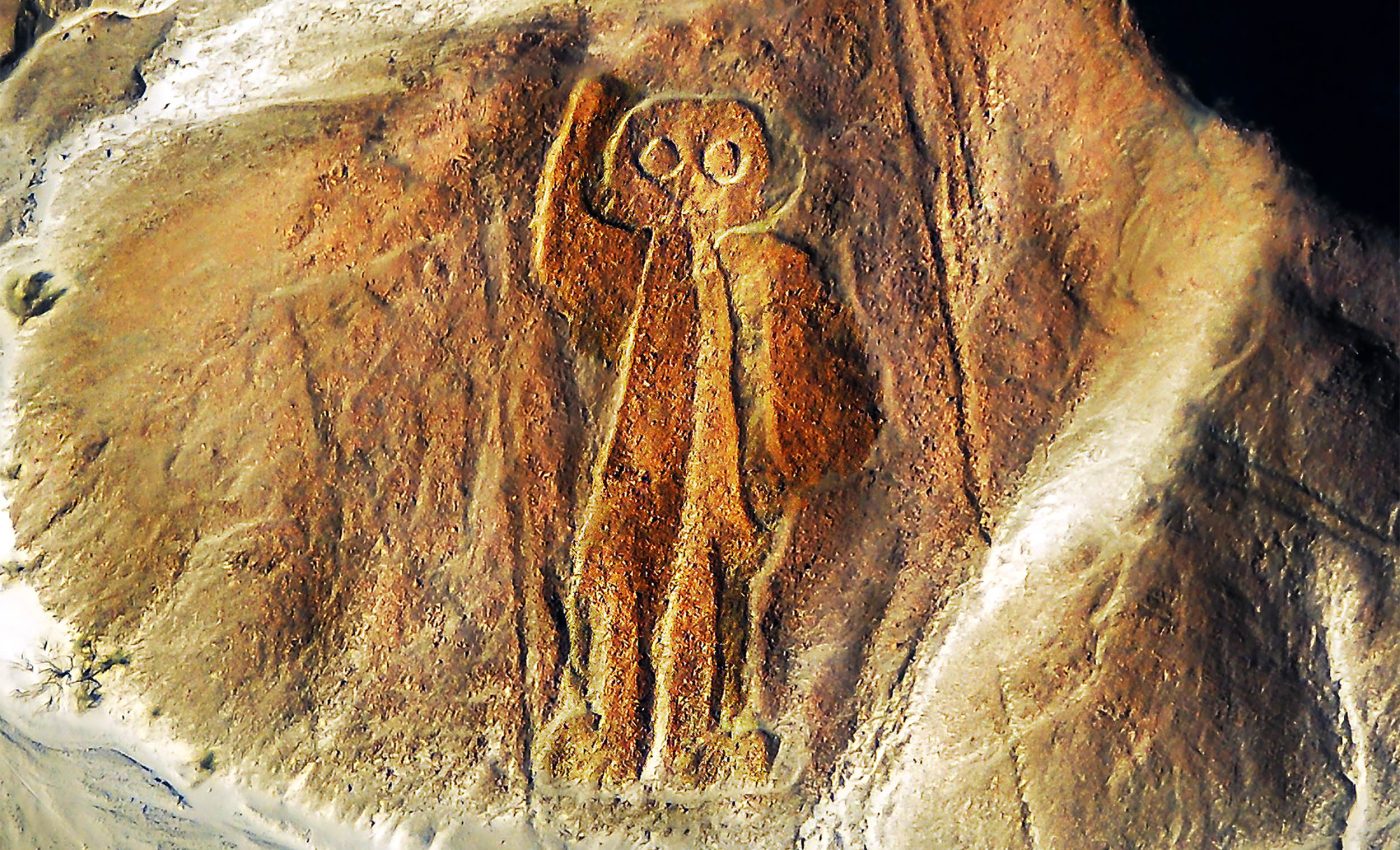
One of Earth's oldest and biggest mysteries is partially solved by Artificial Intelligence
The sun-baked flats of southern Peru hold a secret bigger than any signpost. From a low ridge, the landscape looks plain enough – just ocher earth and scattered stones. Yet from the air, pale etchings known as Nazca geoglyphs spread out across thirty-one miles of desert like pages in an ancient picture book.
Scholars have long marveled at these Nazca geoglyphs: animals, people, and patterns scraped into the soil roughly two thousand years ago.
Their purpose has never been obvious, and for decades each new survey has offered more puzzles than answers.
Nazca geoglyphs carved on desert canvas
Masato Sakai of Japan’s Yamagata University has spent two decades walking the Nazca Pampa, a dry plateau that sits about 1,640 feet above sea level.
The lack of rain and the region’s remoteness have sheltered the drawings from erosion and farming.
Two main styles dominate the site. Giant “line-type” designs – think the famous hummingbird – stretch for hundreds of feet.
Smaller “surface-type” figures appear where workers once brushed away dark stones to expose lighter sand.
Early mapping relied on planes and satellite photos. Even then, the sharpest images missed many faint or partial motifs.
Relief-type figures, often no larger than a city bus, hug age-old footpaths and easily hide in the dusty palette.
AI scans the Peruvian sands
Enter a collaboration with IBM Research. Between September 2022 and February 2023, Sakai’s team fed an artificial-intelligence model examples of known glyphs, then set it loose on high-resolution photos of the entire plateau.
In six months, the system flagged 303 new surface-type drawings – almost doubling the catalog built up since the early twentieth century.

That fresh haul pushes the confirmed total to 430 pieces, 318 of which Yamagata University has logged since it began work in 2004.
Instead of boxing objects the usual way, the model treated the desert as a grid of tiny image tiles and scored each one for geoglyph likelihood.
The researchers split every confirmed figure into smaller patches to give the algorithm extra training material, a trick that compensated for the limited dataset.
What are the Nazca geoglyphs telling us?
Many newly spotted icons cluster within 141 feet of ancient trails. They show human torsos, stylized livestock, and eerie isolated heads.
“The human heads depict human sacrifices to the gods,” Sakai explained. The pathway setting hints that small groups used these pictures as teaching aids or spiritual prompts during routine travel.
Pottery shards nearby suggest such relief-type figures may predate the grander line drawings. Their subjects lean toward domestic life, a contrast to the wild creatures often celebrated in the larger images.
Ritual routes and roadside lessons
Line-type glyphs anchor the start and finish of broader pilgrimage routes, typically lying about 112 feet from ceremonial lines scored into the ground.
Archaeologists think processions moved along these corridors, stopping at the vast bird, monkey, or whale outlines for communal rites.
“At that time, there was no written language. People learned about the roles of humans and animals by looking at pictures and used them as places for rituals,” he said.
That spoken insight, paired with the spatial data, supports the idea that the Nazca culture wove its belief system straight into the landscape.
Travelers likely rehearsed myths, seasonal duties, or social roles by pacing past images tailored to each lesson.
Behind the numbers
The 303 fresh finds are all surface-type, yet they vary in design and age. Roughly half depict human or animal heads, many with eyes or mouths exaggerated for emphasis.
The rest show full figures, including camelids and felines that were vital to everyday survival. Their average length is about 20 yards.

The AI’s accuracy jumped once researchers applied transfer learning – starting with a vision model trained on everyday photographs before fine-tuning it for desert imagery.
Such efficiency matters because the Nazca Pampa spans more than 190 square miles. Manual surveys would take years, but AI can flag probable sites in days, letting field crews focus on verification and conservation.
AI and the future of archaeology
The success in Peru demonstrates how machine learning can spotlight hidden heritage without disturbing the ground.
Similar techniques already aid shipwreck hunts in the Mediterranean and temple searches in Cambodia’s jungles. As satellite coverage improves, smaller teams will parse vast regions for subtle traces of ancient life.
For the Nazca Lines, the next step is protection. Mining, unregulated tourism, and modern roads nibble at the fragile crust.
Digital maps built from AI detections give local authorities a clearer picture of what needs fencing, signage, or rerouting.
Sharing these maps online also invites global scholars to test fresh hypotheses about how the drawings fit with climate shifts, trade, and social change over fifteen centuries.
What’s next for the Nazca geoglyphs?
What began as a curiosity spotted by pilot Toribio Mejía Xesspe in 1927 now stands as proof – yes, proof – of cooperation between traditional fieldwork and cutting-edge tech.
The Nazca people left no written chronicles, but they etched stories big enough to survive millennia of wind and sun.
With new eyes in the sky and smarter algorithms on the ground, today’s researchers are finally starting to read those stories in full.
The full study was published in the journal Proceedings of the National Academy of Sciences.
—–
Like what you read? Subscribe to our newsletter for engaging articles, exclusive content, and the latest updates.
Check us out on EarthSnap, a free app brought to you by Eric Ralls and Earth.com.
—–













